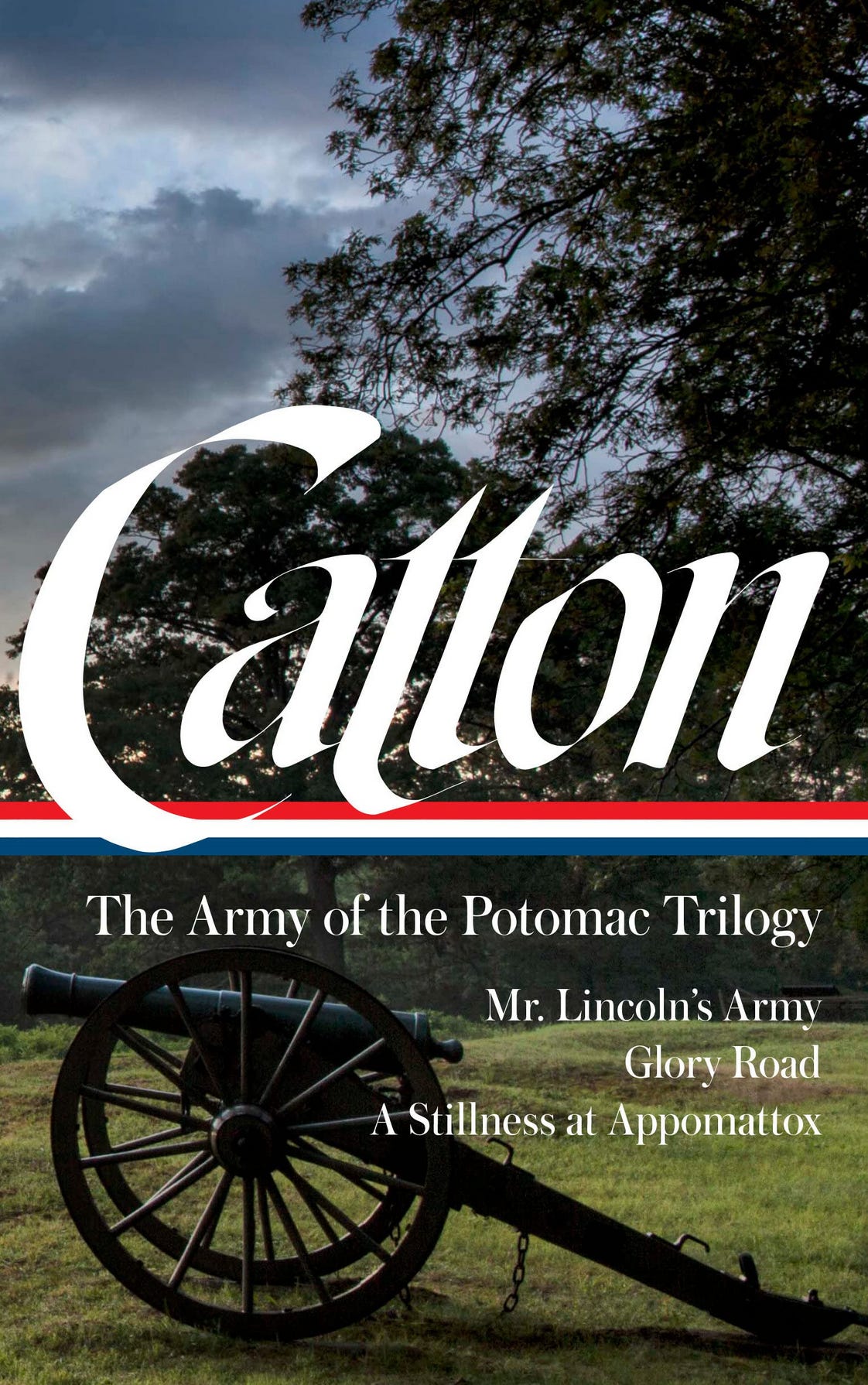Other than a few sections, I have never read Bruce Catton’s Army of the Potomac trilogy in its entirety. I am trying to rectify this with the publication of The Library of America’s new edition, which includes a very helpful introduction by historian Gary Gallagher.
I am thoroughly enjoying it. There are so many interesting narrative choices, even in the opening chapter. Catton begins Mr. Lincoln’s Army in the wake of the failed Peninsula Campaign and the logistical challenges of moving the Army of the Potomac to counter Robert E. Lee’s offensive into northern Virginia. That task fell to Colonel Herman Haupt—superintendent of military railroads. Catton describes Haupt’s failed attempt to convince Gen. George B. McClellan to allow him to secure rail lines by sending out a batter of artillery and sharpshooters ahead to the flat cars and freight trains to deal with any enemy cavalry or infantry in the vicinity.
McClellan refused Haupt’s request.
It’s an unusual narrative choice to begin here and at such a low point in the life of the Army of the Potomac, but I suspect that it will work to set the tone for forthcoming chapters as well as the other two volumes. Right from the beginning we see the ways in which bureacracy and mismanagement can hamper even the best supplied and motivated army. As Gallagher points out, this perspective stemmed from Catton’s work in the Office for Emergency Management and as director of informatin for the War Production Board.
The reader follows Haupt’s subsequent attempt to find another commander on the ground who is willing to help him do his job at a time when there appeared to be so little direction from the top.
What this does do is allow Catton to focus on the rank-and-file, who he clearly learned to respect through his discussions with veterans of the war as a child growing up in Michigan. Catton’s descriptions cover every aspect of soldiering, from the uniforms they wore to the language they spoke in camp. These men come alive through his writing.
It’s impossible to read Catton apart from his experience in WWII, but the culture and politics of the Cold War no doubt shaped his understanding of the Civil War as well. Catton’s trilogy was published between 1951 and 1953.
The volunteer army of 1861-62 served as the backbone of the Union just as the civilian population did at the height of the Cold War against communism. The only question that remained unsettled in both case was whether effective leadership could be found to lead the nation to victory.
Catton’s own faith in the volunteer soldiers is highlighted in his description of the army’s response to McClellan’s arrival on the field to resume command in the wake of the Federal disaster at Second Bull Run. Here is how he describes it:
The men who were there that night seem to have spent the rest of their lives trying to make people who were not there understand what it was like. About all they could say was that there was mad cheering and hysterical happiness and a sudden feeling that everything was going to be all right, so that every man forgot that he was tired and hungry and dirty, forgot that he had been miserably beaten, and looked forward with a bright certainty that all mistakes would presently be redeemed. And it is clear that some sort of miracle had happened; the most amazing and dramatic one, perhaps, in American military history, with an entire army completely transformed between the hot dust of midafternooon and the quiet coolness of starlight. But exactly why this miracle took place, and precisely what it was that this man did to make the soldiers love him as no general in the army’s history was ever loved—this they could not seem to tell, probably because they did not quite know themselves. One veteran, trying to explain, finally let it go by saying: ‘The love borne by soldiers to a favorite chief, if it does not surpass, is more unreasoning than the love of a woman.’ (p. 57)
The emphasis on leadership may sound naive to our ears, but it perhaps captures something essential about how Americans remembered the Civil War at mid-century as well as an imagined synergy between the civilian population and its elected leaders during the immediate post-WWII period.
Catton seems to be suggesting that with the right leader anything is possible, regardless of prior defeats and setbacks. It also offers a warning when that leadeship is lacking. As many of his readers likely knew at the time, the defeats would continue.
And when he came back men split their throats with cheering, and tilted their battle flags proudly forward, and forgot that they had been starved and misused, and became a great army once more and went off to define the shape and purport of the war on the sunlit fields and glades that were waiting for them around a little Dunker church in the Maryland hills. (p. 58)
As I stated up front, I am really enjoying Catton’s Civil War narrative. His descriptions of key commanders and politicians are incredibly rich. Catton’s coverage of battles doesn’t get bogged down in tactical minutiae and his descriptions of various landscapes and other natural features are evocative.
I will continue to share my thoughts as I make my way through the next 1100 pages.





This is the series that pulled me into the Civil War. I remember reading the Haupt passage while listening to the trains rumble over the Neabsco Creek bridge not far beyond my bedroom window. That was late '80s so, unfortunately, I don't remember much about the narrative...
Thanks to all of you for sharing your personal stories about reading Catton for the first time. Really enjoying reading your comments today.